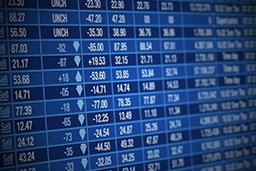To be listed on Nasdaq or the New York Stock Exchange, publicly traded companies are required to meet certain minimum listing criteria. For example, both exchanges compel listed companies to maintain “Continued Listing Standards,” such as minimum bid and market capitalization requirements.
Pursuant to these metrics, Nasdaq-listed companies must maintain a bid price of at least $1 per share and a market value of $5M to $15M (these are so-called “Price-Based Requirements”). Issuers listed on the NYSE, however, have to maintain a minimum bid price of at least $1.00 over any consecutive 20-trading-day period and (1) have stockholders’ equity greater than $50M and (2) an average global market capitalization over a consecutive 30-trading-day period of greater than $50M. These NYSE standards are known as the “Minimum Price Condition” and the “Market Capitalization Standard,” respectively. Of note, if a company on the NYSE fails to meet its applicable listing standards, as set forth under Section 802 of the NYSE Listing Company Manual, the NYSE allows for up to an 18-month cure period. Nasdaq, on the other hand, allows up to six months to regain compliance.
By virtue of the COVID-19 pandemic and resulting market uncertainty, some Nasdaq- and NYSE-listed companies may have become non-compliant with their various listing standards. In ordinary circumstances, these issuers would be allowed a limited amount of time to regain compliance. But in light of the economic downturn that has come on the heels of the coronavirus crisis and its impact on stock prices, Nasdaq and the NYSE have filed temporary rule changes with the SEC to allow for an extension of time for companies to come back into compliance. These rules, which have already been approved and go into effect immediately, toll Nasdaq and NYSE compliance through the period ending June 30, 2020.
Below, Michelman & Robinson answers the questions issuers may have regarding the tolling of the compliance period.
NASDAQ
Q. What must a company do if it receives notification that it has fallen out of compliance with Price-Based Requirements?
A. Despite tolling of the compliance period, issuers notified that they are not compliant with Price-Based Requirements will still have to make public disclosure of such notification by filing a Form 8-K (when required by SEC rules), or by issuing a press release. Companies must also notify Nasdaq’s MarketWatch 10 minutes in advance of the Form 8-K or press release filing.
Q. How much time will a Nasdaq-listed company have to get back into compliance with Price-Based Requirements?
A. Starting on July 1, 2020, issuers that fell out of compliance during the tolling period will generally be given Nasdaq’s standard 180 days to regain compliance with Price-Based Requirements. Companies that were identified as non-compliant prior to the tolling period will have the balance of any compliance period resume on July 1, 2020.
Q. How does Nasdaq’s tolling of the compliance period impact companies that are in the process of being delisted?
A. Commencing July 1, 2020, companies that were involved in the delisting hearing process prior to the tolling period will return to that process at the same stage they were at when the tolling period began.
Q. What else will Nasdaq be doing during the tolling period that might impact issuers?
A. Throughout the tolling period, Nasdaq will continue to monitor the listing requirements and notify companies about new instances of non-compliance in accordance with existing Nasdaq rules.
NYSE
Q. Big picture: what has the NYSE done in connection with the Minimum Price Condition and Market Capitalization Standard?
A. The NYSE has effectively suspended the application of the Minimum Price Condition and Market Capitalization standards through June 30, 2020, thus allowing companies additional time to regain compliance.
Q. What must an NYSE-listed company now do to demonstrate compliance with the Market Capitalization Standard?
A. In terms of the Market Capitalization Standard, issuers are generally allowed a maximum of 18 months to cure non-compliance. Under the temporary rule, the compliance requirements will be suspended until July 1, 2020, and determinations as to whether a company satisfies this metric will be based on a consecutive 30-trading-day period starting on July 1, 2020. An issuer will be deemed to have returned to compliance with the Market Capitalization Standard when it can meaningfully demonstrate (1) its compliance with that metric for two consecutive quarters, or (2) the company’s ability to qualify under an original listing standard for two consecutive quarters.
Q. What is required of issuers relative to the Minimum Price Condition?
A. With regard to the Minimum Price Condition, any company that falls out of compliance during the temporary suspension period, will be allowed six months to regain compliance commencing July 1, 2020. Such a company will be considered to have come back into compliance if at any time during the six month cure period it is (1) able to maintain a $1.00 average share price during any consecutive 30-trading-day period and (2) trading at $1.00 or higher at the end of such 30-trading-day period.
If the issuer was notified of non-compliance with the Minimum Price Condition requirement prior to the tolling period, its compliance period will be paused until July 1, 2020, at which time the six-month cure period will recommence. But when a NYSE-listed company is notified of non-compliance during the temporary rule suspension, the six-month cure period will not start until July 1, 2020.
Q. What must a company listed on the NYSE do if notified that it is out of compliance?
A. Similar to the requirements placed upon Nasdaq-listed companies (as discussed above), any issuer trading on the NYSE that is notified of noncompliance during the tolling period will have to issue a press release disclosing the non-compliance, as set forth in Section 802.02 or 802.03 of the NYSE Listed Company Manual. Likewise, where applicable, these companies will be subject to the Form 8-K disclosure requirement under SEC rules and be required to submit a plan of compliance to the NYSE explaining the steps the issuer intends to take to regain compliance. Non-compliant companies should be aware that the NYSE will continue to attach a “.BC” indicator to their tickers and will continue to identify them as below compliance on the NYSE’s website during the tolling period.
This blog post is not offered, and should not be relied on, as legal advice. You should consult an attorney for advice in specific situations.

